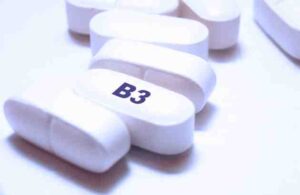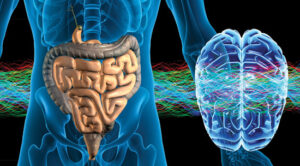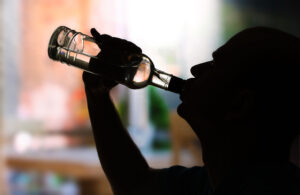High Serotonin
Peaceful, fulfilled, calm, open, clear-minded, laid back, socially dominant [1,2,3,4]. Life with high serotonin levels can be beautiful.
Read about the link between meditation, serotonin and psychedelic states: Psychedelic Buddha: How to Get High Without Drugs
Serotonin Deficiency
Anxiety, depression, pessimism, aggression [5,6]. Life is bleak when you are low on serotonin.
Thankfully there are natural ways to increase your serotonin.
1 – Increase Serotonin with Meditation

Serotonin is one of the reasons why we feel peaceful and calm after sitting down and letting go of thoughts. Meditation has been shown in several studies to increase serotonin levels [7,8].
Meditators also have higher levels of the sleep promoting hormone melatonin. Melatonin is made out of serotonin in the pineal gland [9].
You may also enter deep states of bliss and euphoria while you are practicing meditation. This is probably a result of the combination of elevated serotonin and dopamine levels [10].
2 – Increase Serotonin with Exercise
Exercise reduces anxiety, depression and sensitivity to stress [11]. It is the closest you get to a miracle cure for anything psychological. Over millions of years we adapted to movement. Movement and exercise is the single best method of balancing our neurotransmitters. One of the effects is that it increases our levels of serotonin [12,13].
Exercise also boosts the amount of tryptophan – the main building block of serotonin – that enters your brain [14]. This effect persists after exercise.
Your blood level of branched chained amino acids, BCAA, goes down when you exercise [15,16]. It then becomes easier for tryptophan to enter your brain, because BCAA’s compete with tryptophan to get into your brain [17].
When we move our bodies and get our pulse up we start breaking down fat molecules [18]. Fat molecules compete with tryptophan for slots on transporter proteins. Therefore, blood levels of tryptophan increase.
Just by moving, you increase the amount of serotonin’s building block and decrease its competition in entering the brain. Tryptophan is immediately put to use in building serotonin when it enters your brain.
Exercise also boosts your production of brain derived neurotrophic factor, BDNF [19]. BDNF acts as a growth hormone for your neurons and brain. And it stimulates production of serotonin [20].
3 – Increase Serotonin with Light
Light therapy is becoming popular as a treatment for seasonal depression. We have lower levels of serotonin during winter than during summer, which is part of the reason for seasonal depression. Bright light stimulates serotonin production [21]. Light therapy can also work other times of the year. Some studies suggests it is an effective treatment for nonseasonal depression.
 Bright light gives the best effect, while dim light is not effective [22]. Light therapy tends to give the best results when done in the morning. Morning plus evening light does not provide any benefit over morning light alone.
Bright light gives the best effect, while dim light is not effective [22]. Light therapy tends to give the best results when done in the morning. Morning plus evening light does not provide any benefit over morning light alone.
Morning light therapy can also help you fall asleep in the evening. Even as little as 15 minutes of light in the morning can help you become sleepy at night.
Light treatment is best with whole spectrum light. White light is better than blue and red light, and UV light is not required.
Light treatment seems to be the most effective with an intensity of 2500 to 10000 lux of full spectrum light.
Examples of light intensity:
|
Full moon on a clear night |
0.27 to 1 lux |
|
Living room lights |
50 lux |
|
Office lighting |
300-500 lux |
|
Full daylight |
10000 to 25000 lux. |
|
Direct sunlight |
32000 – 100000 lux. |
Light treatment is especially effective in winter for people with seasonal mood disorders. Patients with seasonal affective disorder (SAD) respond particularly well to light treatment. Other predictors of a good response to light treatment are sugar cravings and excessive daytime sleepiness.
If you decide to buy a light therapy lamp, go for one with full spectrum light and intensity of 2500-10000 lux.
4 – Increase Serotonin with Sunlight
Sunlight stimulates release of serotonin [23]. Human skin has a built in serotonergic system that seems to be capable of generating serotonin. Tryptophan hydroxylase, which is the initial enzyme in the synthesis of serotonin, is present in human skin.
Many are afraid of skin cancer because we hear so much about it. But we get more sick from too little sun than from too much sun [24]. Bones do not form properly, we get depressed and we get sick. This is partially because we get too little vitamin D.
Sufficient vitamin D in early life is correlated with a smaller risk of developing type 1 diabetes. Children who received 2000 IU of vitamin D per day from the age of one, had an 80% lower risk of developing type 1 diabetes later in life. Vitamin D can even help prevent multiple sclerosis [25].
How much vitamin D you produce depends on the number of UVB photons that penetrate the skin. Important factors are time spent in the sun, how high the sun is in the sky, clothes, excess fat on the body, sunscreen, and skin melanin.
A half-hour in the summer sun in a bathing suit leads to release of about 50,000 IU (1.25 mg) vitamin D within 24 hours of exposure for most white people. The same amount of time in the sun leads to 20,000–30,000 IU for tanned individuals and 8,000–10,000 IU for dark-skinned people.
Vitamin D also increases your level of dopamine, adding to the euphoria [26].
5 – Increase Serotonin with Social Dominance
 Studies on monkeys suggests that we have more serotonin when we are socially dominant [21]. When dominant monkeys are taken out of their social context their serotonin levels quickly goes down to normal.
Studies on monkeys suggests that we have more serotonin when we are socially dominant [21]. When dominant monkeys are taken out of their social context their serotonin levels quickly goes down to normal.
Studies on altered tryptophan levels also show that serotonin makes us more dominant. Participants who received high doses of tryptophan became more socially dominant, less aggressive and made less critical comments of others [27,3,28].
There seems to be a two way connection. You get more serotonin when you’re socially dominant and serotonin also makes you more socially dominant.
6 – Increase Serotonin with Thought
Some researchers found that thoughts affect our serotonin levels [29]. They used positron emission tomography to measure serotonin levels in people who went through positive, negative and neutral mood inductions.
When they reported higher mood levels their serotonin production was higher in the anterior cingulate cortex. When they reported lower mood levels, serotonin production was lower. This that the interaction between serotonin and mood is 2-way. Serotonin influences mood and mood influences serotonin.
The easiest and quickest way of changing your mood comes from a concept in cognitive neuroscience – Priming.
Priming is to use sensory cues to stimulate associations. For example if you say the word amused, you can’t help but get associations to that word. You automatically think about words, meanings and experiences related to the word amused. You become more amused within seconds.
Serotonin production is closely related to hierarchy and social dominance. It is therefore wise to use priming to make yourself more socially dominant. Words like confident, dominant and strong can trigger feelings associated with serotonin.
You can also change your body language and facial expressions into that of a more socially dominant person [30].
7 – Increase Serotonin with Niacin (B3)
The amount of clinical research on niacin’s effect on anxiety is sparse. However, there is some anecdotal evidence for its potency.
 Jonathan E. Prousky is a Professor at the Canadian College of Naturopathic Medicine. He presented three case studies in the paper “Supplemental Niacinamide Mitigates Anxiety Symptoms: Three Case Reports” [31].
Jonathan E. Prousky is a Professor at the Canadian College of Naturopathic Medicine. He presented three case studies in the paper “Supplemental Niacinamide Mitigates Anxiety Symptoms: Three Case Reports” [31].
Read about them here: This Natural Vitamin Might Be the Cure for Your Anxiety
Niacin can have an effect on anxiety in several ways. You might have a niacin deficiency. It can have benzodiazepine-like effects because of its effect on the neurotransmitter GABA. And it could be because it raises serotonin levels [32,33,34], by diverting the tryptophan to serotonin production.
Dosage of Niacinamide
Prof. Prousky’s recommended dosage for therapeutic effects is 2000-4500mg of niacinamide per day. There have been reports of liver toxicity with doses of 9000 mg per day, but the symptoms went away when the dosage was lowered.
8 – Increase Serotonin with Pyridoxine (B6)
Pyridoxine has been found to increase serotonin levels in monkeys [35]. Pyridoxine is a B-vitamin that is cheap and widely available.
9 – Increase Serotonin with Theanine
Theanine, an amino acid found in tea, can enter our brain and affect our levels of neurotransmitters. Theanine seems to elevate our brain levels of both dopamine and serotonin [36,37]. However, there is some controversy on its effects on serotonin. One study found that injecting theanine into rat’s brains lowered serotonin levels [38].
10 – Increase Serotonin with Low GI Carbs
Avoid sugar, refined wheat and other fast acting carbohydrates. Insulin removes tryptophan’s competitors in reaching your brain, BCAA’s, from your bloodstream. It is therefore important to have a steady level of insulin. Fast acting carbohydrates tend to give a large insulin spike followed by low blood sugar. Carbohydrates with low glycemic index are slowly released into your bloodstream, thereby keeping your insulin levels stable.
11 – Increase Serotonin with Omega 3
The most important omega-3 fatty acids are EPA and DHA. EPA has been proposed to increase serotonin release and DHA influences serotonin receptors by increasing cell membrane fluidity [39]. Long-term omega-3 intake can increase your serotonin levels [40].
12 – Increase Serotonin with Gut bacteria
Our guts are filled with bacteria, both good and bad. A gut flora out of balance can have a wide range of negative effects on your health. Your brain health and mood is also affected.
One study found that the probiotic bifidobacteria infantis significantly increase levels of tryptophan in the blood [41]. Probiotic treatment over 8 weeks have been found to help lower depression [42].
13 – Increase Serotonin with Curcumin
Curcumin is a compound found in the spice turmeric. Curcumin has been shown to have antidepressant effects because of its effects on serotonin and dopamine [43]. Curcumin inhibits the activity of monoamine oxidase – an enzyme involved in the breakdown of norepinephrine, serotonin and dopamine [44].
This means that curcumin leads to increased concentration and prolonged activity of serotonin at the synapse. Curcumin taken orally has low bioavailability, but the bioavailability has been shown to increase when taken together with piperine, or black pepper.
14 – Increase Serotonin by Limiting Alcohol

Alcohol has been found to significantly reduce serotonin 45 minutes after drinking [45]. The sleep rhythms of people who have drunk alcohol the day before is significantly different from controls, but very similar to patients with depression.
These results suggests that low serotonin is the mechanism behind depression after alcohol.
There is clear evidence between alcohol consumption and violence or other types of aggressive behavior. Aggression is also heavily linked to low serotonin levels [46]. Aggressive behavior after alcohol may be due to alcohol’s disrupting effects on serotonin metabolism.
The High Tryptophan Myth
We know that taking tryptophan increases your brain’s level of serotonin. There is a belief that foods high in tryptophan, such as turkey, will do the same. This is a myth. These high protein foods always contain a large amount of the other amino acids, which compete with tryptophan in crossing the blood-brain barrier.
There is also a myth that bananas improve your mood because they contain serotonin. It is true that bananas contain serotonin, but it does not cross the blood brain barrier [21].
About Vegard:
Vegard Gjerde is one of the two founders of Global Harmony Crew.
Subscribe to Global Harmony Crew to learn more about brain chemistry and ecstatic states. When you subscribe you get their 20$ inner peace course for free.
Learn more about brain chemistry from their Udemy course.
References:
[1] Mead, M. N. “Benefits of Sunlight: A Bright Spot for Human Health”. Environmental Health Perspective, 2008.
[2] Kalbitzer, J., et al. “The personality trait openness is related to cerebral 5-HTT levels.” Neuroimage, 2009.
[3] Young, S.N., Leyton, M. “The role of serotonin in human mood and social interaction. Insight from altered tryptophan levels”. Pharmacology Biochemistry and Behavior,. 2002.
[4] Watanabe, N., Yamamoto, M. “Neural mechanisms of social dominance”. Frontiers in Neuroscience, 2015
[5] Sathyanarayana Rao, T. S., et al “Understanding nutrition, depression and mental illnesses“. Indian Journal of Psychiatry, 2008.
[6] Seo, D., Patrick, C. J. “Role of Serotonin and Dopamine System Interactions in the Neurobiology of Impulsive Aggression and its Comorbidity with other Clinical Disorders”. Aggression and Violent Behavior, 2009.
[7] Bujatti M, Riederer P. “Serotonin, noradrenaline, dopamine metabolites in transcendental meditation-technique”. Journal of Neural Transmission, 1976.
[8] Mohandas, E. “Neurobiology of Spirituality”. Mens Sana Monographs, 2008.
[9] Tooley, G.A. ”Acute increases in night-time plasma melatonin levels following a period of meditation”. Biological Psychology, 2000.
[10] Kjaer, T.W. et al. “Increased dopamine tone during meditation-induced change of consciousness”. Brain Research: Cognitive Brain Research, 2002.
[11] Salmon, P. “Effects of physical exercise on anxiety, depression, and sensitivity to stress: a unifying theory”. Clinical Psychology Review, 2001.
[12] Jacobs, B. L., Fornal, C. A. “Activity of serotonergic neurons in behaving animals”. Neuropsychopharmacology, 1999.
[13] Rueter L. E., Jacobs, B. L. “A microdialysis examination of serotonin release in the rat forebrain induced by behavioral/environmental manipulations”. Brain Research, 1996.
[14] Chaouloff, F., et al. “Motor activity increases tryptophan, 5-hydroxyindoleacetic acid, and homovanillic acid in ventricular cerebrospinal fluid of the conscious rat”. Journal Neurochemistry, 1986.
[15] Davis, J.M., et al. “Serotonin and central nervous system fatigue: nutritional considerations”. The American Journal of Clinical Nutrition, 2000.
[16] Blomstrand, E. “Amino acids and central fatigue”. Amino Acids, 2001.
[17] Pardridge, W. M. “Blood-brain barrier transport of nutrients”. Nutrition Reviews, 1986.
[18] Ratey, J. J., Hagerman, E. “Spark: How Exercise Will Improve the Performance of Your Brain”. Quercus, 2010.
[19] Ferris, L.T. “The effect of acute exercise on serum brain-derived neurotrophic factor levels and cognitive function”. Medicine and Science in Sports and Exercise, 2007.
[20] Naumenko, V. S., et al. “Effect of brain-derived neurotrophic factor on behavior and key members of the brain serotonin system in genetically predisposed to behavioral disorders mouse strains”. Neuroscience, 2012.
[21] Young, S. N. “How to increase serotonin in the human brain without drugs”. Journal of Psychiatry and Neuroscience, 2007.
[22] Parry, B. L., Maurer, E. L. “Light treatment of mood disorders”. Dialogues in Clinical Neuroscience, 2003.
[23] Sansone, R. A., Sansone, L. A. “Sunshine, Serotonin, and Skin: A Partial Explanation for Seasonal Patterns in Psychopathology?” Innovations in Clinical Neuroscience, 2013.
[24] Mead, M. N. “Benefits of Sunlight: A Bright Spot for Human Health”. Environmental Health Perspective. 2008.
[25] Ascherio, A., et al. “Vitamin D and multiple sclerosis”. The Lancet Neurology, 2010.
[26] Kesby J. P., et al. “The effects of vitamin D on brain development and adult brain function”. Molecular and Cellular Endocrinology, 2011.
[27] Watanabe, N., Yamamoto, M. “Neural mechanisms of social dominance”. Frontiers in Neuroscience, 2015.
[28] Moskowitz, D. S., et al. “Tryptophan, serotonin and human social behavior”. Advances in Experimental Medicine and Biology, 2003.
[29] Perreau-Linck, E. et al. “In vivo measurements of brain trapping of C-labelled alpha-methyl-L-tryptophan during acute changes in mood states”. Journal of Psychiatry and Neuroscience, 2007.
[30]Chris L. Kleinke, Thomas R. Peterson, Thomas R. Rutledge. ”Effects of Self-Generated Facial Expressions on Mood”. Journal of Personality and Social Psychology, 1998.
[31] Prousky, J. “Supplemental Niacinamide Mitigates Anxiety Symptoms: Three Case Reports”. Journal of Orthomolecular Medicine Vol. 20, No. 3, 2005.
[32] Chen, Y., Guillemin, G. “Kynurenine Pathway Metabolites in Humans: Disease and Healthy States”. Int J Tryptophan Res. 2009.
[33] Richard D. et al. “L-Tryptophan: Basic Metabolic Functions, Behavioral Research and Therapeutic Indications”. Int J Tryptophan Res. 2009.
[34] Viljoen, M et al. “Antidepressants may lead to a decrease in niacin and NAD in patients with poor dietary intake.” Med Hypotheses. 2015.
[35] Hartvig, P., et al. “Pyridoxine effect on synthesis rate of serotonin in the monkey brain measured with positron emission tomography”. Journal of Neural Transmission, 1995.
[36] Yokogoshi H., et al. “Effect of theanine, r-glutamylethylamide, on brain monoamines and striatal dopamine release in conscious rats”. Neurochemical Research, 1998.
[37] Nathan, P. J., et al “The neuropharmacology of L-theanine(N-ethyl-L-glutamine): a possible neuroprotective and cognitive enhancing agent”. Journal of Herbal Pharmacotherapy, 2006.
[38] Yokogoshi, H., et al. “Theanine-induced reduction of brain serotonin concentration in rats”. Bioscience Biotechnology and Biochemistry, 1998.
[39] Patrick, R. P., Ames, B. N. “Vitamin D and the omega-3 fatty acids control serotonin synthesis and action, part 2: relevance for ADHD, bipolar disorder, schizophrenia, and impulsive behavior”. The FASEB Journal, 2015.
[40] Grosso, G., et al “Omega-3 Fatty Acids and Depression: Scientific Evidence and Biological Mechanisms”. Oxidative Medicine and Cellular Longevity, 2014.
[41] Desbonnet, L., et al. “The probiotic Bifidobacteria infantis: An assessment of potential antidepressant properties in the rat”. Journal of Psychiatric Research, 2008.
[42] Akkasheh, G., et al. “Clinical and metabolic response to probiotic administration in patients with major depressive disorder: A randomized, double-blind, placebo-controlled trial”.Nutrition, 2016.
[43] Kulkarni, S. K., et al. “Antidepressant activity of curcumin: involvement of serotonin and dopamine system”. Psychopharmacology, 2008.
[44] Kulkarni, S. K., Dhir, A. “An Overview of Curcumin in Neurological Disorders”. Indian Journal of Pharmaceutical Science, 2010.
[45] Pietraszek, M. H., et al. “Alcohol-induced depression: involvement of serotonin”. Alcohol and Alcoholism, 1991.
[46] Badawy, A.A. “Alcohol and violence and the possible role of serotonin”. Criminal Behavior and Mental Health, 2003.


Very useful. Really giving insights into the complexity of brain. Please continue to educate.
Padmanabhan.
Thanks.a.lot.for.providing.the.information.about.mental.health.I.am.the.follower